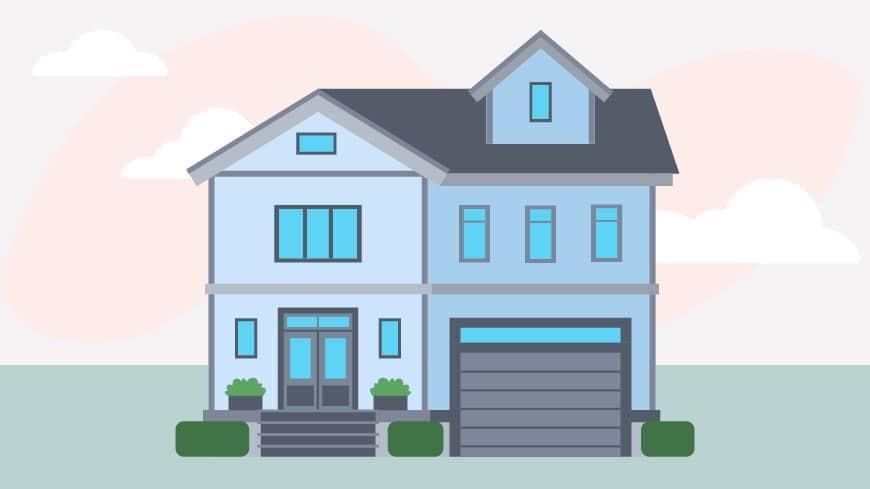What Is the Credit Score Range?

Knowing your credit score is important, but it might not mean much if you don't know the credit score range. Given how indispensable this measurement is for your financial health and creditworthiness, you should have some idea of what the credit score chart looks like and what the difference is between poor, good and great credit. Most credit scores range from about 300 to about 850, and the higher, the better.
At the end of the day, your personal credit score is what moves the needle; and yet, despite increased access to scores online, many people are still confused about its implications in everyday life. To help demystify the sprawling world of modern credit scores and their effects on your ability to borrow money and fund mortgages, let’s take a deeper look at credit score ranges, what they mean for you, and how to ensure you’re doing all you can to create sound financial habits.
How Are Credit Scores Calculated?
While credit reports and credit scores are both hugely important instruments in determining your financial reputation with lenders and other entities, it’s your credit score that’s used as an instant indicator of risk or reliability. However, while your credit report does not contain an actual score, it does contain the information that is used to create it.
There are a number of factors that make up your credit score, including:
- Payment history
- Amount owed (credit utilization)
- Credit file age
- Account variety
- Applications of new credit
Credit Score Chart Range

In coordination with the Fair Isaac Corporation, Experian, TransUnion and Equifax all employ slightly different algorithms to determine your credit score. Additionally, they have access to different information from your creditors. Together, these factors produce credit scores that will inevitably vary.
When you apply for a home loan, lenders usually look at your FICO score, which is a standard way to score credit.
FICO scores are divided into these different categories:
300-579 (Poor Credit)
- This is a challenging range. If your score falls here, it might be hard to get a mortgage and even if you do, the interest rates will probably be very high, making the loan much more expensive overall.
580-669 (Fair Credit)
- This is a score that shows some creditworthiness but still a moderate level of risk. In this range of scores, you might be able to get an FHA loan, but the interest rates will generally be above average.
670-739 (Good Credit)
- If your credit score is in this range, you have more mortgage options and a better chance of being approved at competitive interest rates, which can save you a lot of money.
740-799 (Very Good Credit)
- Lenders see people in this range as low-risk borrowers, which means they often offer better loan terms and lower interest rates, which can lead to huge savings.
800-850 (Excellent Credit)
- A score in this range shows that you are very responsible with your money, and people who get loans in this range usually get the best interest rates and terms.
VantageScore Credit Score Ranges
VantageScore, which also ranges from 300 to 850, is another popular credit scoring model. It’s not used as much in mortgage lending as FICO, though.
VantageScore, which was made by the three biggest credit bureaus (Experian, Equifax, and TransUnion), also divides credit users into ranges, but it does so using slightly different criteria and weights, focusing more on recent credit behavior.
300-499 (Very Poor Credit)
- Getting a mortgage with this score is hard because you don't have many options and the interest rates are high.
500-600 (Poor Credit)
- You might be able to get a loan in this range, but the interest rates will be higher, making the loan more expensive.
601-660 (Fair Credit)
- If you have a fair score, you can get some loans, like FHA loans, with fair terms but higher-than-average interest rates.
661-780 (Good Credit)
- Standard mortgage options are available with better rates in this range.
781-850 (Excellent Credit)
- This is the best range for credit scores because it lets you get the best interest rates and terms.
FICO Score VS. VantageScore
FICO and VantageScore have some things in common, but the things they focus on and how they calculate scores are different.
Knowing these differences can help you improve their credit scores in a way that takes into account the type of score a lender might use.
Here's a chart that shows how they compare:
|
|
| |||
|---|---|---|---|---|---|
Credit Range | 300 - 850 | 300 - 850 | |||
Emphasis | Long-term credit behavior | Recent credit trends | |||
Minimum Credit History | 6 months of credit history required | 1 month of credit history required | |||
Late Payment Impact | Recent late payments affect score more | Weighs recent trends more heavily | |||
Credit Mix | Rewards diverse credit types | Moderately emphasizes credit mix | |||
Credit Utilization | Focuses on individual account utilization | Considers total credit usage patterns | |||
Trended Data | Does not consider | Consider patterns over time | |||
Common Use | Widely used for mortgages and loans | More commonly used for consumer credit |
What Is a Good Credit Score to Buy a House?
A good credit score starts at least 670, but the exact requirements depend on the type of mortgage:
Credit Score Requirements for Common Mortgage Types
Conventional Loans
For conventional mortgages, you typically need to meet established credit standards. Since these loans aren’t government-backed and are offered by private lenders, the credit requirements are generally stricter.
If a borrower has a credit score of 740 or higher, they can get better interest rates and not have to pay private mortgage insurance (PMI) if they choose to put down at least 20%.
Customers with a good credit history usually choose conventional loans, which also appeal to people who want to be able to choose how they want to pay back the loan.
FHA Loans
The Federal Housing Administration backs FHA loans, which are meant to help people who have bad credit or little credit history.
For a down payment option as low as 3.5%, you need a score of at least 580. With a 10% down payment option, you may be able to get by with a score as low as 500.
These loans are great for people who are buying their first home, getting back on their feet financially after a rough patch, or who don't have a lot of savings. FHA loans are easier to get, but they come with extra fees like mortgage insurance premiums (MIP).
VA Loans
One of the most affordable options is a VA loan, which doesn't need a down payment, has low interest rates, and doesn't require private mortgage insurance.
Veterans, active-duty service members, and eligible surviving spouses are the only ones who can get them. They don't have a set minimum credit score that you need to meet.
USDA Loans
USDA loans are backed by the U.S. Department of Agriculture. They cater to low- to moderate-income buyers in rural or suburban areas. The official minimum score isn't set in stone, but most lenders want applicants to have at least a 640.
Some exceptions are made for scores as low as 580 if there are factors that make up for it, like a steady income or a bigger down payment. These loans have low interest rates and don't require a down payment, which makes them a good choice for buyers in eligible areas.
How Does Credit Score Affect Mortgage Interest Rates?
Your credit score affects more than just whether or not you can get a mortgage. It also affects the interest rate, which in turn affects how much the whole loan will cost. A better score usually means a lower interest rate, which can save you a lot of money over the life of the loan.
On a 30-year $300,000 mortgage, the difference in interest rates between someone with a 620 score and someone with a 740 score is 1%. This means that the person with the higher score could save you over $50,000 in interest payments.
Even small changes in rates can save you a lot of money. So, if your score is low, think about how you can raise it before you apply for a mortgage. This will increase your chances of getting a better rate.
Factors That Affect Credit Score
Credit scores aren’t random—they're based on a number of factors that have specific effects on your score. If you know these steps, you can take steps to raise your score over time.
Payment History and Its Significance
The most important part of your FICO score is your payment history, which makes up 35% of it. Making regular payments on time will help your credit score, but missing or being late on payments can hurt it badly.
It's possible for even one late payment to hurt your credit score, especially if it's more than 30 days past due or if you don't have much credit history. So, staying up to date is important.
Credit Utilization Ratio
Credit utilization, or the amount of your available credit that you are actually using, makes up around 30% of your FICO score. Most credit experts say that this ratio should be less than 30% for best credit health.
For example, if your total credit limit is $1,000, don't use more than $300. A high utilization rate can mean that you're having trouble paying your bills, which could lower your score. On the other hand, a low utilization rate means that you're using your available credit wisely.
Length of Credit History
The length of your credit history, which makes up 15% of your score, shows how well you've managed credit in the past.
It shows the age of your oldest account, the age of your newest account, and the average age of all your accounts. Even if you're not using older accounts, leaving them open can help your score.
Types of Credit Accounts
Lenders also look at the types of credit accounts you have, like mortgages, credit cards, and installment loans.
10% of your score comes from having different types of credit accounts. Having a variety of credit accounts can show lenders that you can handle different types of credit. Some people think this factor can help them get a better score, but it's not necessary.
Recent Credit Inquiries
Each time you apply for credit, it triggers a hard inquiry, which can slightly lower your score for up to a year.
It can be more noticeable if you make a lot of hard inquiries in a short amount of time, like when you're looking for a mortgage loan.
FICO does, however, let you shop around for rates on certain loans, like mortgages, auto loans, and student loans, within a short time frame. They do this by counting multiple inquiries as a single inquiry.
How Can You Improve Your Credit Score
Improving your credit score is all about making smart personal finance choices and understanding key scoring factors. Start by reviewing your credit report regularly—you can request a free credit report from each of the three major providers annually. Tools like credit monitoring can alert you to changes and help you spot issues early.
1) Reduce Missed Payments As Much As Possible
Pay bills on time. Even though this can be hard at times, it’s one of the most effective ways to boost your score. On-time payments show lenders you’re responsible, reducing your credit risk.
2) Don’t Go Over Your Credit Limit
Keeping your credit utilization rate below 30% of your credit limit is another simple way to improve where you stand. Try to lower credit card balances or pay them off completely if you can.
3) Slow Down on Applying for New Credit in A Short Amount of Time
Be cautious with new credit. Frequent credit applications can lower your score temporarily, so only apply for credit when needed. If you’re building credit from scratch or recovering from a poor credit score, a secured credit card can help you establish a positive history.
4) Use Common Bills to Improve Your Credit Score
If you’re aiming for an excellent credit score, consider tools like Experian Boost, which can add payments for utilities or streaming services to your history.
5) Have A Clear Understanding of Different Credit Score Ranges and Models
Understanding the different ranges used by models like VantageScore 3.0 and VantageScore 4.0 can help you track progress toward the highest credit score possible and the benefits that follow.
By managing your credit card debt wisely and maintaining good money habits, you’ll move closer to a good score, or even a higher credit score, which helps improve your chances for favorable lending decisions from home loan providers, credit card issuers and other financial institutions.
Your Path to Homeownership Starts Here
Your credit score is a big part of your financial options, from getting a mortgage to paying for a car. You can set attainable goals and get better over time if you know where you stand in the credit score range.
Ready to take that next step? Consider Rate’s Same Day Mortgage!
Rate, Inc. does not provide credit counseling or credit repair services.
Rate, Inc. is a private corporation organized under the laws of the State of Delaware. It has no affiliation with the US Department of Housing and Urban Development, the US Department of Veterans Affairs, the Nevada Department of Veterans Services, the US Department of Agriculture, or any other government agency. No compensation can be received for advising or assisting another person with a matter relating to veterans’ benefits except as authorized under Title 38 of the United States Code.




